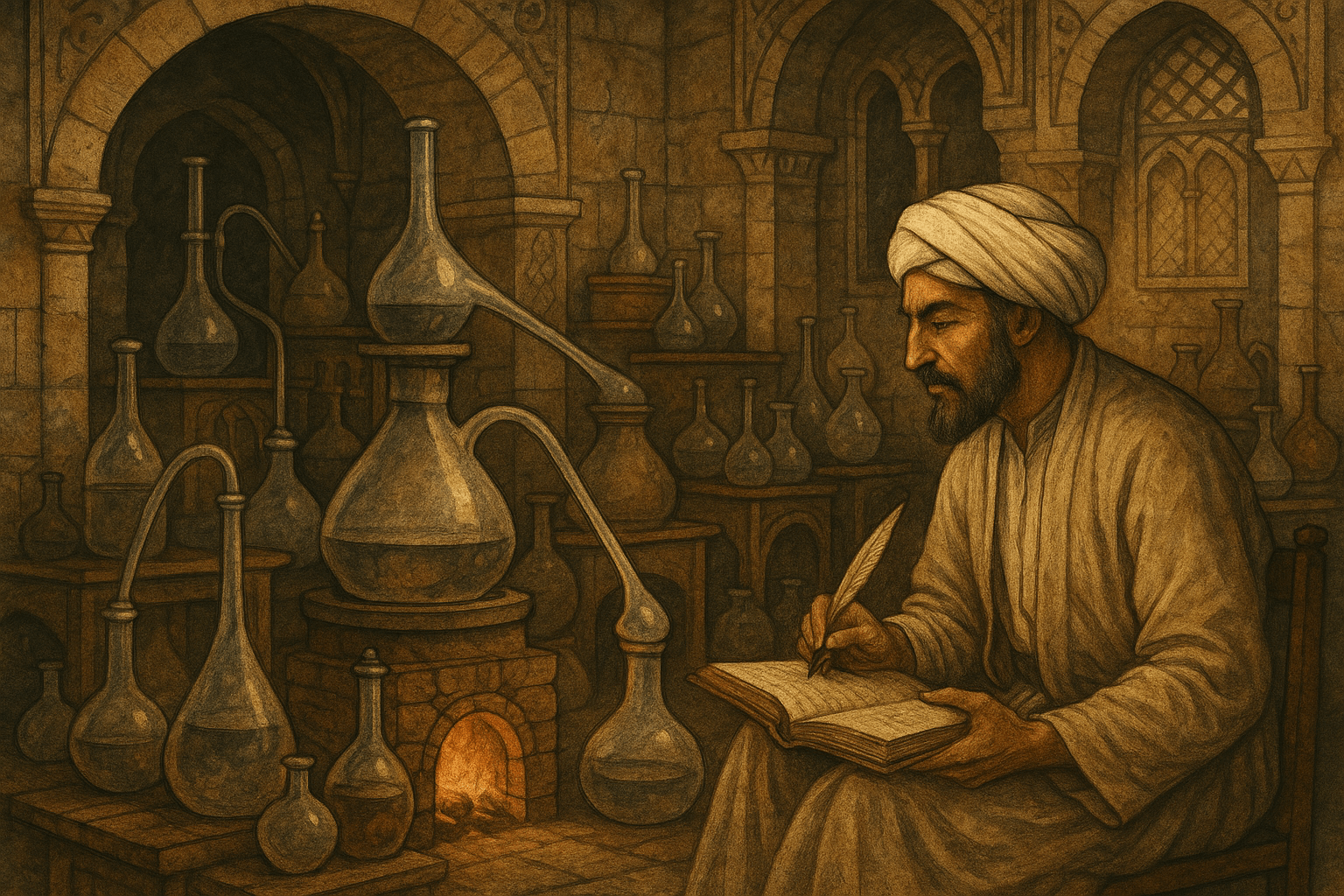From Ancient Roots to a Golden Age
The story begins not in the medieval Islamic world, but in Hellenistic Egypt, particularly the city of Alexandria. Here, Egyptian metallurgy and Greek philosophical theories fused to create an early form of alchemy, or khemia. Thinkers like Zosimos of Panopolis in the 3rd and 4th centuries CE wrote complex allegorical texts about the transformation of matter, mixing practical recipes with Gnostic spirituality.
When the Arab conquests swept across North Africa and the Middle East, these ancient texts were not lost. On the contrary, they were avidly sought out. During the Abbasid Caliphate (c. 750–1258 CE), a massive translation movement centered in Baghdad’s legendary House of Wisdom (Bayt al-Hikma) brought Greek, Persian, and Indian knowledge into the Arabic language. It was in this fertile intellectual environment that Islamic scholars took the theoretical and often cryptic writings of the Greeks and transformed them into a practical, hands-on discipline.
The Father of Chemistry: Jabir ibn Hayyan
No discussion of Islamic alchemy is complete without mentioning the monumental figure of Jabir ibn Hayyan (known in the West as Geber), who lived in the 8th century. While the vast body of work attributed to him—the Jabirian corpus—was likely penned by him and his students over several generations, its impact is undeniable. Jabir’s core philosophy was revolutionary: he insisted on systematic experimentation.
He famously wrote, “The first essential in chemistry is that you should perform practical work and conduct experiments, for he who performs not practical work nor makes experiments will never attain to the least degree of mastery.” This was a radical departure from the purely philosophical debates of the ancient Greeks. For Jabir, knowledge was something to be discovered and proven in the laboratory.
His contributions were foundational:
- Classification: He was one of the first to attempt a systematic classification of chemical substances. He categorized them based on their properties into “spirits” (volatile substances like camphor, arsenic, and alcohol), “metals” (like gold, lead, and iron), and “bodies” (non-malleable substances that could be turned into powder).
- Chemical Processes: The Jabirian corpus provided clear, detailed descriptions of fundamental chemical processes that are still used today, including distillation, crystallization, calcination, sublimation, and evaporation.
- The Sulfur-Mercury Theory: Jabir proposed that all metals were formed from a combination of two essential principles: sulfur (representing the principle of combustibility) and mercury (representing the principle of fusibility and metallic properties). While not correct by modern standards, it was a coherent theoretical framework that attempted to explain the observed properties of matter—a crucial step towards a true chemical science.
The Alchemist’s Laboratory: Forging the Tools of Science
The emphasis on experimentation led to an explosion in the development of laboratory equipment. Islamic alchemists were not just thinkers; they were makers. Their greatest invention was arguably the alembic still (from the Arabic al-anbiq, meaning “the cup”). This ingenious device, with its retort for heating liquids and its cooled collection vessel, made fractional distillation possible on a new level of purity and efficiency.
Using the alembic, alchemists were the first to distill and isolate many crucial substances. They produced concentrated acetic acid from vinegar, and most importantly, they isolated alcohol (al-kuhl). While its intoxicating properties were known, its use as a powerful solvent was a game-changer, allowing for the creation of new essences, perfumes, and medicines.
The laboratory of an Islamic alchemist was a far cry from a sorcerer’s den. It was filled with precisely designed tools:
- Crucibles for melting metals.
- Beakers and flasks for holding and mixing liquids.
- The water bath (or bain-marie) for gentle, controlled heating.
- Funnels, sieves, and mortars and pestles for separation and grinding.
Through this meticulous work, they were able to prepare substances unknown to the ancient world, like nitric acid, sulfuric acid, and aqua regia (a mixture of nitric and hydrochloric acids capable of dissolving gold itself). These were not just laboratory curiosities; they became vital reagents in metallurgy, assaying, and medicine.
A Legacy Written in Acid and Alcohol
So what about turning lead into gold? For many alchemists, including Jabir, the goal of transmutation (takwin) was real, but it was often as much a philosophical and spiritual allegory for perfecting the human soul as it was a physical goal. The true gold they created wasn’t a transmuted metal—it was the wealth of practical chemical knowledge they uncovered along the way.
Thinkers like Muhammad ibn Zakariya al-Razi (Rhazes) in the 9th century took Jabir’s work even further. A physician by trade, Al-Razi applied his alchemical knowledge directly to medicine, compiling one of the most comprehensive chemical encyclopedias of the time and dismissing the more mystical elements of the craft in favor of empirical facts.
When the scientific works of Jabir, Al-Razi, and others were translated into Latin beginning in the 12th century, they electrified European thought. European alchemists adopted not only their methods and equipment but also their terminology. Words like alchemy, alcohol, alkali, elixir, and alembic are all permanent linguistic monuments to this Arabic heritage.
This new, experimental alchemy laid the direct groundwork for the Scientific Revolution. When pioneering chemists like Robert Boyle began to formally establish chemistry as a distinct science in the 17th century, they were building upon a foundation of experimental practice, laboratory equipment, and chemical knowledge that had been painstakingly constructed in the workshops of Baghdad, Cairo, and Córdoba nearly a thousand years earlier. Far from a magical dead-end, Islamic alchemy was the crucial, brilliant bridge between ancient philosophy and modern chemistry.
